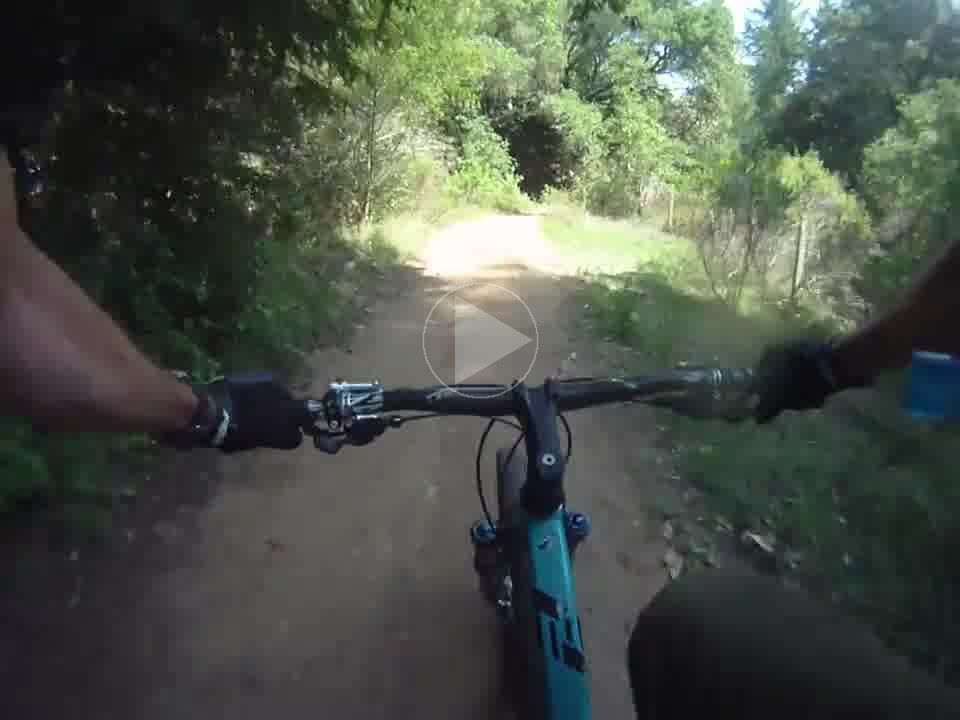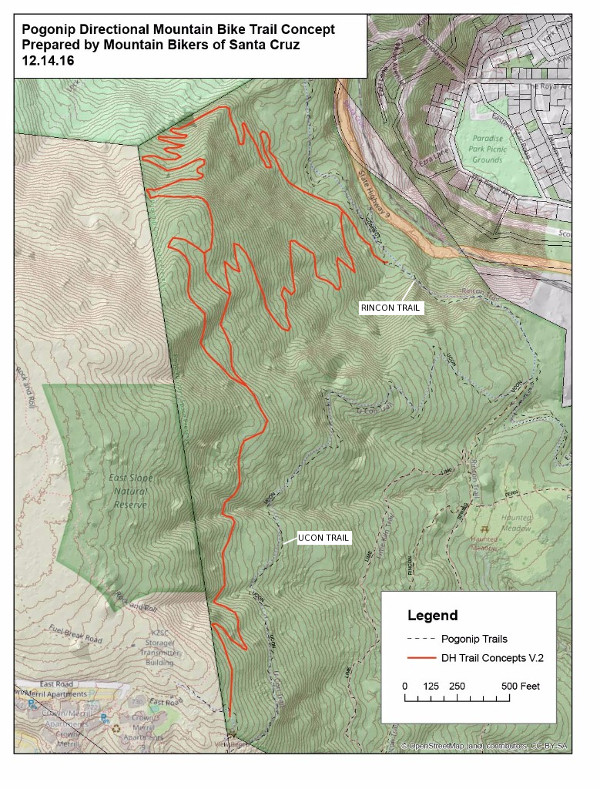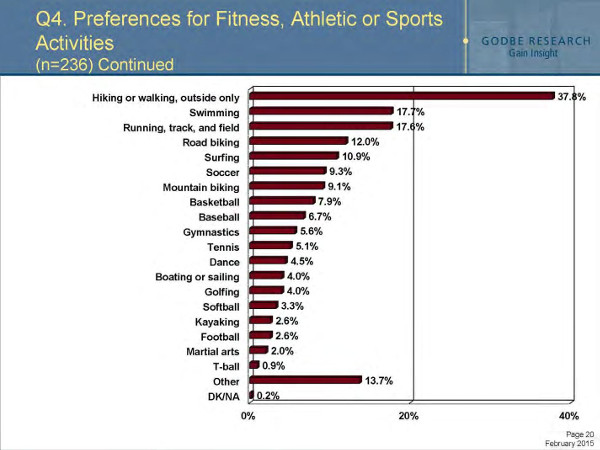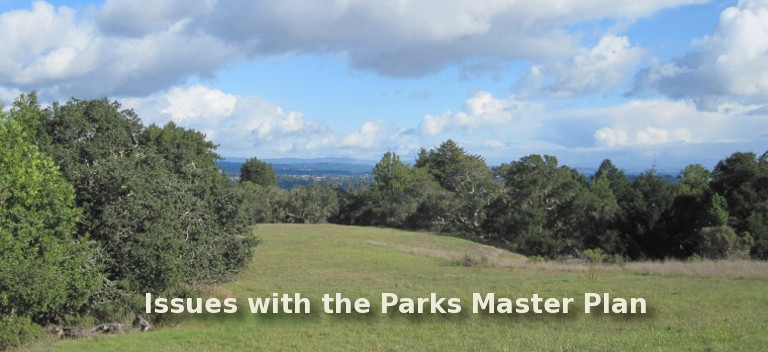At only one square mile, the Pogonip is too small to accommodate both the existing hiking-only trails and additional mountain biking trails.
The area of the Pogonip is 640 acres, which is exactly one square mile. Roughly speaking, it is about two miles in the north-south dimension, by half a mile in the ease-west dimension. This means that any new mountain biking trails will be too close to existing hiking-only trails.
Already, the Emma McCrary Trail is too close to the Fern Trail and the Lower Meadow Trail. In some places, the trails are visible from each other. Groups of bikers on the Emma McCrary Trail are often noisy, which impinges on the peace and quiet for anyone walking on one of the neighboring trails. The noise of the bikers is also likely to be disturbing to wildlife in the vicinity of the trail.
The proximity of the trails also encourages bikers to ride on the hiking-only trail, which can be distressing to hikers.
Please read our letters to the Santa Cruz City Council
and the City's Parks and Recreation Commission. Click
here to grab them.
A document entitled “A Sunday Walk on the
Pogonip”, now updated with a response from Parks
staff, is available
here.
Why is mountain biking suddenly classified as “passive recreation”?
From Chapter 9 of the City's General Plan (page 110):
The city's natural areas provide valuable wildlife habitats, scenic and recreational enjoyment, and an escape from the built environment. The beauty of these areas compels resident and visitor use for passive recreational activities such as walking, jogging, hiking, picnicking, bird watching, and relaxing. City owned natural areas include Pogonip …
From Section 2.4 of the Draft Parks Master Plan (page 2.4-7):
Open spaces are natural areas that provide valuable wildlife habitats, scenic and recreational enjoyment, and an escape from the built environment. Open space lands are essentially unimproved and devoted to an open space use for the purposes of natural resource preservation, outdoor recreation, and public health and safety. The beauty of these areas compels resident and visitor uses that are more typical of passive recreational activities such as walking, jogging, mountain biking, hiking, bird watching, and relaxing. The City's parks system includes … [the] Pogonip Open Space (640 acres).
The City's General Plan may be obtained here. The Draft of the Parks Master Plan may be obtained here, and its Appendices may be obtained here.

Here's a biker, about to bike down the U-conn Trail. If you click on the image you should be able to watch the video (courtesy of YouTube) that's behind the image.
Is this “passive recreation”?
On Page 4.2 - 74 of the Parks Master Plan is this list of five Recommendations to “Explore modifications to the existing master plan to improve access and connectivity”:
- Link Harvey West to the Emma McCrary Trail, possibly with an easement through private property.
- Consider allowing mountain bike use on the remainder of the Rincon Trail, from the U-Con trail intersection to Glen Coolidge Drive.
- Explore the possibility of creating a multi-use trail along Glen Coolidge Dr to connect Spring Street to UCSC and the U-Con Trail.
- Add a separate downhill mountain bike trail with unique features and obstacles. [See the red lines on the map.]
- Explore adding a parking area near the Emma McCrary trail on Golf Club Dr. in the meadow immediately to the northwest of the vehicle access gate.

Why are no maps provided in the Plan that would describe the details of these recommendations? The only map (above) is provided by MBOSC.
And why are “access and connectivity” recommended only for humans, but not for wildlife?
On Page 5.2 - 19 of the Appendices to the Parks Master Plan is this bar chart, showing the Preferences that members of our community have for various types of Sports Activities—as determined by a recent professional telephone survey done by Godbe Research.

As can be seen from this chart, the preference for “Hiking or walking, outside only” is at the top of the chart, preferred by 37.8% of those surveyed, more than four times the preference for “Mountain biking”. A second (online) survey was done more recently, also by Godbe Research. It showed similar results. See Pages 5.2 - 79 and 5.2 - 83 of the Appendices.
Why is this strong preference for hiking or walking completely ignored in the Plan, especially for the Pogonip, which is very popular for hiking and jogging?
On Page 5.6 - 1 of the Appendices is this list of twelve “Stakeholders” who were interviewed regarding the Plan:

Among them is Mark Davidson, the former President, and current active member of Mountain Bikers of Santa Cruz. Absent from the list is any stakeholder who could be considered as representing local groups such as the Sierra Club, the California Native Plant Society, the Santa Cruz Bird Club, or Friends of the Pogonip.
